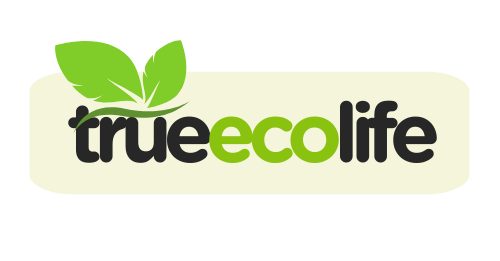8 Sustainability Examples for a Greener Office
We may earn a commission for purchases made using our links. Please see our disclosure to learn more.
Sustainability is for all of us, not just big businesses or environmentalists. Imagine walking into an office where there is no garbage piling in the trash, the lighting is gentle and energy-efficient, and the air is clean. Wouldn’t that make you feel good and productive? Along with reducing the influence on the environment, a greener workplace aims to provide a more comfortable, efficient, and cost-effective working. You’re in the perfect place if you’ve been considering making your office more environmentally friendly but are unsure where to begin. You can make your office an environmentally friendly one that benefits everyone by implementing these eight easy yet effective sustainability examples.
1. Go Paperless: Digital is the New Green
How much paper do you use each day? Everything from printed emails to meeting handouts adds up, frequently without need. Admit it or not, the majority of what we print is buried behind mountains of garbage or thrown in the trash. Making the switch to digital solutions speeds up and improves workflow while also saving forests. There is less waste, less mess, and far greater convenience when cloud storage, digital contracts, and email are used instead of printouts.
It’s not necessary to become paperless right away. Start simple by replacing sticky notes with digital meeting notes or an online task manager. Urge your staff to consider whether they actually need the document on paper before printing it. Selecting recycled paper when printing is required.
2. Energy Efficiency: The Power of Smart Consumption
The second on the list of sustainability examples is saving energy. Using outdated equipment, leaving lights on all night, and running computers consistently consume more energy than we know. Being environmentally conscious is only one aspect of an energy-efficient office; another is reducing wasteful spending. Over time, minor adjustments like utilizing energy-efficient appliances, shutting off electronics when not in use, and upgrading to LED bulbs can have a significant impact.
Consider this: you would anticipate a huge gasoline bill if you kept your car running all night, wouldn’t you? The same reasoning holds true for office energy consumption. Setting laptops to sleep mode, installing motion-sensor lights in toilets, and using power strips to turn off unused electronics can all result in significant cost savings. It’s not about forsaking comfort; it’s about using power properly. When you begin to observe a decrease in
3. Sustainable Office Supplies: Small Choices, Big Impact
Office supplies may seem like minor details, but when you multiply daily usage across an entire office, their environmental impact is staggering. Take a look at your desk—how many disposable pens, plastic binders, or paper notebooks do you see? Now imagine if every office in your city made a switch to sustainable alternatives. The effect would be huge.
The good news is that sustainable office supplies are widely available and often just as affordable as their wasteful counterparts. Refillable pens, recycled paper, and eco-friendly notebooks are small swaps that make a big difference. Choosing office furniture made from recycled materials or responsibly sourced wood also contributes to a greener workspace. By making better choices in the supplies we use every day, we create an office that values sustainability without sacrificing quality or function.

4. Green Commuting: Ditch the Solo Drive
How many cars do you see packed with just one person during rush hour? It’s easy to overlook how much daily commuting contributes to pollution, but the impact is undeniable. Encouraging green commuting options is one of the most effective ways to reduce your office’s carbon footprint while also promoting healthier lifestyles. Whether it’s carpooling, biking, using public transportation, or even allowing remote work days, each effort helps cut down emissions.
Some companies offer incentives, like free bus passes or preferred parking for carpoolers, to encourage eco-friendly commuting. Others provide bike racks and shower facilities to make cycling a practical option. Even a simple initiative like organizing a monthly carpool sign-up can create a ripple effect. The less we rely on single-occupancy cars, the better it is for both the environment and our stress levels. After all, who wouldn’t want to avoid the hassle of traffic jams?
5. Indoor Plants: Nature’s Air Purifiers
Have you ever walked into an office filled with plants and immediately felt a sense of calm? That’s not just in your head. Plants improve air quality by absorbing carbon dioxide and releasing oxygen, making the workspace feel fresher and more inviting. They also help reduce stress and boost productivity—who wouldn’t want that?
Certain plants, like snake plants, peace lilies, and spider plants, are particularly good at filtering out toxins from the air. They require minimal maintenance and can thrive in office conditions, even under artificial lighting. Having greenery around isn’t just about aesthetics; it’s about creating a space where people feel good and can do their best work. Think of office plants as natural air purifiers that also double as mood boosters.
If you’re worried about keeping plants alive, start with a few hardy varieties that require little water and attention. Over time, you might even find yourself becoming a proud plant parent, adding more greenery as you see the benefits unfold.
6. Smart Waste Management: Reduce, Reuse, Recycle
A single overflowing trash bin can tell you a lot about an office’s sustainability efforts—or lack thereof. Waste management isn’t just about throwing things in the right bin; it’s about reducing waste before it even starts. A well-organized recycling system ensures that materials like paper, plastic, and electronic waste don’t end up in landfills unnecessarily.
Setting up designated recycling stations with clear labels can make a world of difference. If your office kitchen is full of single-use plastics, it may be time to switch to reusable alternatives. Encouraging employees to bring their own reusable bottles, mugs, and lunch containers is a simple way to cut down on unnecessary waste. When people see how easy and effective waste reduction can be, they’re more likely to adopt sustainable habits at home too.
7. Water Conservation: Every Drop Counts
Water is one of the most valuable resources we have, yet it’s often wasted without a second thought. A running tap or a leaky faucet might seem insignificant, but when you multiply that by an entire office over months or years, the waste becomes staggering. Fortunately, making a few conscious changes can significantly reduce unnecessary water usage.
Low-flow faucets and toilets are a great place to start. They use significantly less water while still getting the job done. Fixing leaks immediately is another essential step—one small drip can waste thousands of gallons over time. Even something as simple as reminding employees not to leave the tap running while washing their hands can make a difference. Water conservation isn’t about drastic changes; it’s about making small, thoughtful choices that add up over time. These sustainability examples can make a positive impact not just on the planet, but on your work life.
8. Eco-Friendly Breakrooms: Green Eating & Drinking
The breakroom is a place of comfort and relaxation, but it’s also a place where sustainability can either thrive or fail. Single-use coffee cups, plastic utensils, and individually wrapped snacks create a massive amount of unnecessary waste. The good news is that transforming a breakroom into an eco-friendly space is easier than you might think.
Providing reusable mugs, plates, and utensils is a simple yet effective step. Investing in a high-quality coffee maker instead of using disposable coffee pods is another great way to reduce waste. Even switching to bulk snacks or encouraging employees to bring their own reusable lunch containers can make a huge impact. A greener breakroom doesn’t just benefit the environment—it also creates a cleaner and more enjoyable space for employees.
Recommended Products for a Greener Office
To help you put these sustainability examples into action, here are some recommended eco-friendly products that can make your office more sustainable:
1. Essentials for an Energy-Efficient Office
- LED Light Bulbs – Reduce energy use by up to 75% versus ordinary bulbs.
- Smart Power Strips – Automatically turn off unused devices to reduce energy waste.
- Rechargeable Batteries – A durable alternative for disposable ones.
2. Sustainable Office Supplies
- Recycled Paper – Made from post-consumer materials to reduce deforestation.
- Refillable Pens & Markers – Reduce plastic waste by reusing the same pen body.
- Eco-Friendly Notebooks – Made from recycled or tree-free paper.
By incorporating these products into your office, you’ll be well on your way to creating a greener, more sustainable workplace. Small changes like these sustainability examples add up, and investing in eco-friendly alternatives makes a lasting impact on both the environment and your bottom line.

Scientific Research on Sustainable Offices
Research confirms that sustainability in the workplace drives both efficiency and long-term success. A study on corporate sustainability’s impact on organizational processes shows that companies integrating green practices improve efficiency, innovation, and stakeholder engagement. Similarly, findings from this corporate sustainability study reveal that businesses prioritizing sustainability tend to develop stronger long-term strategies and financial resilience. Investing in a greener office with these sustainability examples isn’t just an ethical choice—it’s a smart business decision.
Final Thoughts
Making an office more sustainable doesn’t mean overhauling everything overnight. It starts with small, manageable changes that eventually lead to lasting impact. Whether it’s switching to LED lighting, adding plants, or improving waste management, every effort contributes to a healthier, more efficient workplace.
Sustainability isn’t just about saving the planet—it’s about creating an environment where people can work smarter, feel better, and take pride in their surroundings. So why wait? Pick one of these sustainability examples and start today. The future of your office (and the planet) will thank you for it.
FAQs
- What is the easiest way to make an office more sustainable?
Start with simple changes like switching to LED bulbs, reducing paper use, and encouraging employees to bring reusable water bottles. - Do sustainable offices save money?
Yes! Energy-efficient lighting, reduced waste, and smart water use all lead to lower costs over time. - How can I get employees excited about sustainability?
Make it fun—set challenges, offer incentives, and lead by example. - Can small offices implement these changes too?
Absolutely! Even the smallest office can go digital, add a few plants, and switch to reusable kitchen supplies. - Why is sustainability important in the workplace?
It improves employee well-being, reduces costs, and helps protect the environment for future generations.




